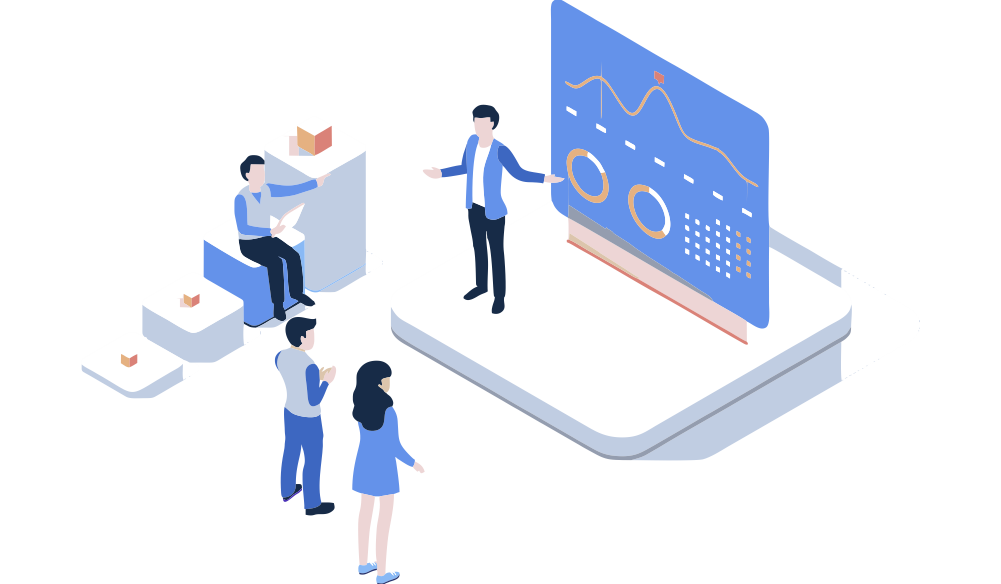
To restrict COVID-19 and minimize employee disease, several businesses are shifting to a remote workforce. Surprisingly, some companies are going remote. However, the appeal of remote work has grown in recent years. Remote workers require distinct administration methods to ensure that work completes quickly, representatives are useful, and representative misrepresentation does not occur. One way is to define a remote tracking strategy. However, there are factors to consider when deciding whether or not to monitor your remote staff and how carefully you monitor them.
In this piece, we'll go over what remote employee monitoring is, the pros and drawbacks to consider, the steps you'll need to take, and how to decide if it's the right decision for your company. To see if your company should monitor remote workers, simply go to our flowchart.
Remote employee monitoring is when a firm monitors its employees using a variety of methods and ideas to improve productivity, accountability, and security. Depending on the level of attention required, monitoring takes different forms for each company.
Before committing to free employee time tracking software or additional monitoring, weigh the advantages and disadvantages.
You can watch how much time your employees spend working while also keeping track of the project budget with employee tracking software. Bringing your time and budget tracking into one system can save you time and provide you with a bird's-eye view of your projects. For instance, if a person spends five hours on something that should only take one hour, it signals a variety of concerns. If your employee spends too much time on a project, they may end up going overboard.
When employees are aware that their time and activities are being tracked, they become more accountable. Workers can better assess their productivity if they have access to the same data and capabilities as their employers.
A carefully established monitoring strategy and monitoring instruments may provide relief to managers who are having difficulty loosening the restraints. Employees that are unable to review project data in real-time are the source of micromanagement. Using a planning process, supervisors can make sure that happens without being invasive.
You can use monitoring software to keep track of your employees' online activities. You may prohibit access to specific files, and actions with increased device monitoring. Employees are less likely to steal corporate assets as a result of this.
In terms of the benefits, there are a few risks to consider when increasing monitoring. Toxic management tactics and unfavorable employee consequences are among the dangers.
Because of the increased data, managers may incline to over-monitor employees. This might become an issue if managers start addressing their staff about minor issues or check-in too regularly even if it seems strange. Instead of relying solely on surveillance software, employers must start trusting their employees.
Employees may feel uneasy or push back if employers are closely watching them, depending on the tools and procedures in place.
Constant surveillance may undermine employees' capacity to perform. Employees must get informed about the process and engage in it, and there can be transparency about where and how monitoring takes place, which can help to minimise stress. Employees who are aware of standards and aspirations are less stressed and more likely to provide feedback.
If you're unfamiliar with employee rights, you may unwittingly violate them while developing the monitoring standards. So the company may find itself in hot water if you don't take steps to stay informed.
A variety of technologies, procedures, and policies come into consideration of monitor employees. The steps, as well as some best, practises for navigating every step of building a comprehensive remote employment policy, are as follows:
You must first identify why you want to start monitoring your employees before diving into the various technology and monitoring methodologies. Have you recently had a project where your team underperformed? Would you like to make your company's data more secure? Are you looking for ways to cut down on the time your managers spend on administrative duties?
Understanding the answers to all these questions might help you define your ultimate goal and figure out the best ways to get there. Keep your goal in mind while you plan, implement, and evaluate your strategy. Your objectives will dictate the tools you use and the standards you set for your team.
Understanding what your staff feels about monitoring could aid in the development of your approach. Recognizing what your employees enjoy and dislike may help you create a remote tracking policy that works for them, and probably feel appreciated.
Gather feedback from all levels of the organization. By soliciting feedback from all employees, you may get a comprehensive picture of what your entire team wants and needs.
Budgeting for monitoring instruments is essential for streamlining the monitoring system, particularly when monitoring workers who are far away. There are numerous options, ranging from easy time tracking software to more complicated management tools.
Some systems incorporate multiple tools into a specific platform, while others allow you to customize tools to match your requirements. Find resources to assist you in improving your present procedures. Your instruments should be directly related to your goals. If they get too far away, it's probably not worth it.
Conducting a trial run involving a couple of members of your team is a technique for evaluating new technologies and gathering quick comments from your staff. Small-group testing also ensures that corporate operations are not affected. If your tools enable it, work with your team to automate reporting to optimise your process.
Now that you know everything there is to know about free employee monitoring software, you must determine whether or not to use it in your firm.